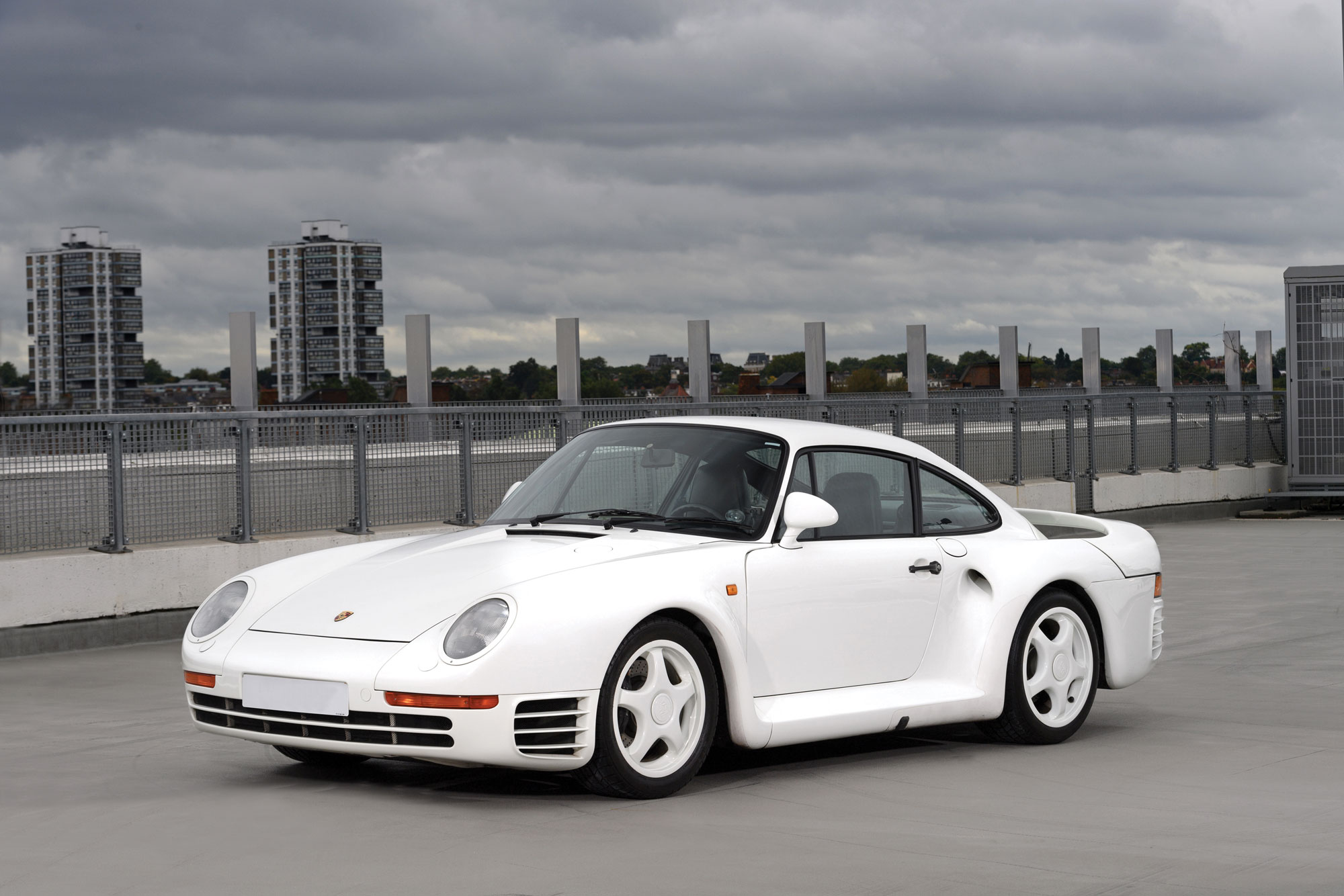Chassis Number: WP0ZZZ95ZHS900057
Claiming highly original unrestored condition and a life of modest driving use, this preservation-quality 959 should strike the fancy of any Porsche enthusiast. According to a factory build record and the research of respected marque authority Jürgen Barth, the 959 was assembled in November 1987 and finished in Grand Prix White paint over an interior of dark blue leather. The car was equipped with heated and electronically adjustable seats and an alarm system.

